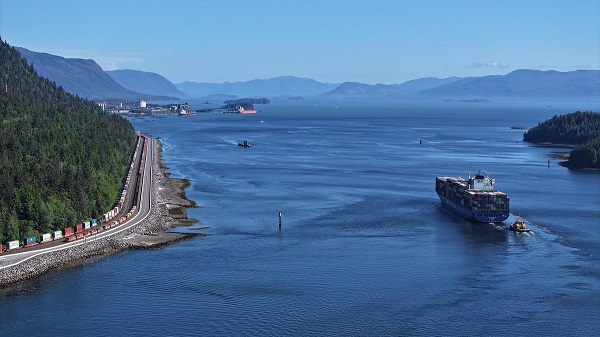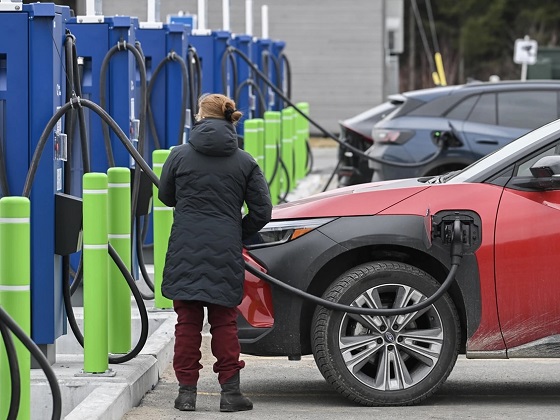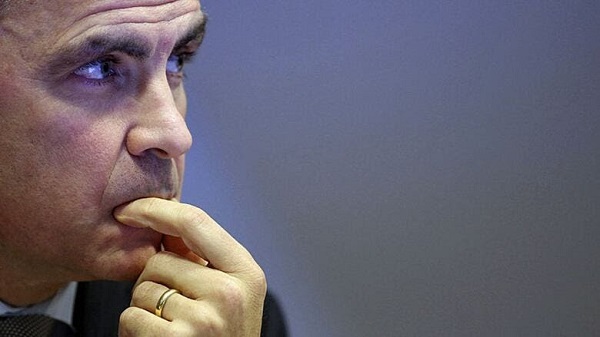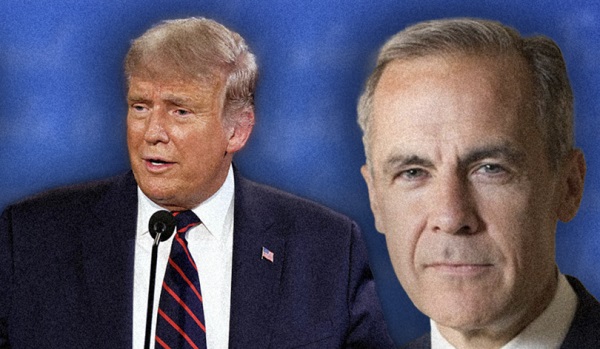Economy
Ottawa’s proposed ‘electricity’ regulations may leave Canadians out in the cold

From the Fraser Institute
In case you haven’t heard, the Trudeau government has proposed a new set of “Clean Electricity Regulations” (CERs) to purportedly reduce the use of fossil fuels in generating electricity. Basically, the CERs would establish new standards for the generation of electricity, limiting the amount of greenhouse gases that can be emitted in the process, and would apply to any unit that uses fossil fuels (coal, natural gas, oil) to generate electricity.
The CERs would hit hardest provinces that rely on fossil fuels to generate electricity: Alberta (89 per cent fossil fuels), Saskatchewan (81 per cent), Nova Scotia (76 per cent) and New Brunswick (30 per cent). Not so much Ontario (7 per cent) and Quebec (1 per cent), which are blessed with vast hydro potential.
In theory, the government has been in “consultation” with electricity producers and the provinces that will be most impacted by the CERs, although some doubt the government’s sincerity.
For example, according to Francis Bradley, CEO of Electricity Canada, which advocates for electricity companies, there is “insufficient time to analyze and provide feedback that could meaningfully impact the regulatory design” adding that the “engagement process has failed to achieve its purpose.” And consequently, the current design of the CERS may impose “significant impairments to the reliability of the electricity system and severe affordability impacts in many parts of the country.”
This was not the first time folks observed a lack of meaningful consultation over the CERs. Earlier this year, Alberta Environment Minister Rebecca Schulz told CBC that an update to the CERs made “no meaningful corrections to the most destructive piece of Canadian electricity regulation in decades” and that CERs “would jeopardize reliability and affordability of power in the province.”
Simply put, with CERs the Trudeau government is gambling with high stakes—namely, the ability of Canadians to access reliable affordable electricity. Previous efforts at decarbonizing electrical systems in Ontario and around the world suggest that such efforts are relatively slow to develop, are expensive, and are often accompanied by periods of electrical system destabilization.
In Ontario, for example, while the provincial government removed coal-generation from its electricity generation from 2010 to 2016, Ontario’s residential electricity costs increased by 71 per cent, far outpacing the 34 per cent average growth in electricity prices across Canada at the time. In 2016, Toronto residents paid $60 more per month than the average Canadian for electricity. And between 2010 and 2016, large industrial users in Toronto and Ottawa experienced cost spikes of 53 per cent and 46 per cent, respectively, while the average increase in electric costs for the rest of Canada was only 14 per cent. Not encouraging stats, if you live in province targeted by CERs.
Reportedly, the Trudeau government plans to release a final version of the new CERs rules by the end of this year. Clearly, in light of the government’s failure to meaningfully consult with the electrical-generation sector and the provinces, the CERs should be put on hold to allow for longer and more sincere efforts to consult before these regulations go into effect and become too entrenched for reform by a future government.
Otherwise, Canadians may pay a steep price for Trudeau’s gamble.
Author:
Economy
Trump opens door to Iranian oil exports

This article supplied by Troy Media.
U.S. President Donald Trump’s chaotic foreign policy is unravelling years of pressure on Iran and fuelling a surge of Iranian oil into global markets. His recent pivot to allow China to buy Iranian crude, despite previously trying to crush those exports, marks a sharp shift from strategic pressure to transactional diplomacy.
This unpredictability isn’t just confusing allies—it’s transforming global oil flows. One day, Trump vetoes an Israeli plan to assassinate Iran’s supreme leader, Ayatollah Khamenei. Days later, he calls for Iran’s unconditional surrender. After announcing a ceasefire between Iran, Israel and the United States, Trump praises both sides then lashes out at them the next day.
The biggest shock came when Trump posted on Truth Social that “China can now continue to purchase Oil from Iran. Hopefully, they will be purchasing plenty from the U.S., also.” The statement reversed the “maximum pressure” campaign he reinstated in February, which aimed to drive Iran’s oil exports to zero. The campaign reimposes sanctions on Tehran, threatening penalties on any country or company buying Iranian crude,
with the goal of crippling Iran’s economy and nuclear ambitions.
This wasn’t foreign policy—it was deal-making. Trump is brokering calm in the Middle East not for strategy, but to boost American oil sales to China. And in the process, he’s giving Iran room to move.
The effects of this shift in U.S. policy are already visible in trade data. Chinese imports of Iranian crude hit record levels in June. Ship-tracking firm Vortexa reported more than 1.8 million barrels per day imported between June 1 and 20. Kpler data, covering June 1 to 27, showed a 1.46 million bpd average, nearly 500,000 more than in May.
Much of the supply came from discounted May loadings destined for China’s independent refineries—the so-called “teapots”—stocking up ahead of peak summer demand. After hostilities broke out between Iran and Israel on June 12, Iran ramped up exports even further, increasing daily crude shipments by 44 per cent within a week.
Iran is under heavy U.S. sanctions, and its oil is typically sold at a discount, especially to China, the world’s largest oil importer. These discounted barrels undercut other exporters, including U.S. allies and global producers like Canada, reducing global prices and shifting power dynamics in the energy market.
All of this happened with full knowledge of the U.S. administration. Analysts now expect Iranian crude to continue flowing freely, as long as Trump sees strategic or economic value in it—though that position could reverse without warning.
Complicating matters is progress toward a U.S.-China trade deal. Commerce Secretary Howard Lutnick told reporters that an agreement reached in May has now been finalized. China later confirmed the understanding. Trump’s oil concession may be part of that broader détente, but it comes at the cost of any consistent pressure on Iran.
Meanwhile, despite Trump’s claims of obliterating Iran’s nuclear program, early reports suggest U.S. strikes merely delayed Tehran’s capabilities by a few months. The public posture of strength contrasts with a quieter reality: Iranian oil is once again flooding global markets.
With OPEC+ also boosting output monthly, there is no shortage of crude on the horizon. In fact, oversupply may once again define the market—and Trump’s erratic diplomacy is helping drive it.
For Canadian producers, especially in Alberta, the return of cheap Iranian oil can mean downward pressure on global prices and stiffer competition in key markets. And with global energy supply increasingly shaped by impulsive political decisions, Canada’s energy sector remains vulnerable to forces far beyond its borders.
This is the new reality: unpredictability at the top is shaping the oil market more than any cartel or conflict. And for now, Iran is winning.
Toronto-based Rashid Husain Syed is a highly regarded analyst specializing in energy and politics, particularly in the Middle East. In addition to his contributions to local and international newspapers, Rashid frequently lends his expertise as a speaker at global conferences. Organizations such as the Department of Energy in Washington and the International Energy Agency in Paris have sought his insights on global energy matters.
Troy Media empowers Canadian community news outlets by providing independent, insightful analysis and commentary. Our mission is to support local media in helping Canadians stay informed and engaged by delivering reliable content that strengthens community connections and deepens understanding across the country.
Alberta
Pierre Poilievre – Per Capita, Hardisty, Alberta Is the Most Important Little Town In Canada

From Pierre Poilievre
-

 International2 days ago
International2 days agoCBS settles with Trump over doctored 60 Minutes Harris interview
-

 Business2 days ago
Business2 days agoWhy it’s time to repeal the oil tanker ban on B.C.’s north coast
-

 Crime1 day ago
Crime1 day agoBryan Kohberger avoids death penalty in brutal killing of four Idaho students
-

 Business2 days ago
Business2 days agoLatest shakedown attempt by Canada Post underscores need for privatization
-

 Energy2 days ago
Energy2 days agoIf Canada Wants to be the World’s Energy Partner, We Need to Act Like It
-

 Alberta2 days ago
Alberta2 days agoPierre Poilievre – Per Capita, Hardisty, Alberta Is the Most Important Little Town In Canada
-

 MxM News1 day ago
MxM News1 day agoUPenn strips Lia Thomas of women’s swimming titles after Title IX investigation
-

 COVID-191 day ago
COVID-191 day agoTop COVID doctor given one of Canada’s highest honors








